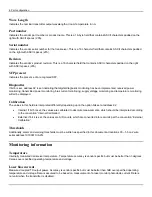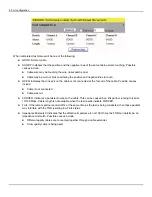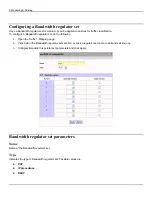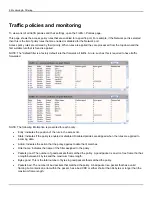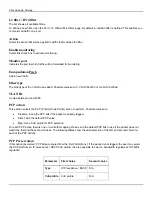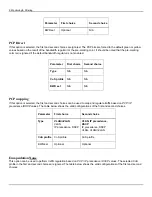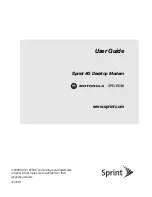
4: Port configuration
When completed, test status will be one of the following:
z
GOOD: Normal cable.
z
SHORT: Indicates that the positive and the negative lines of the same cable pair are touching: Possible
causes include:
z
Cable wire may be touching the wire closet patch panel.
z
Cable may be worn or broken allowing the positive and negative lines to touch.
z
OPEN: Indicates that one pair on the cable is not connected at the far end of the cable. Possible causes
include:
z
Cable is not connected.
z
Cable was cut.
z
FORCED: Indicates a persistent noise on the cable. This can be caused by a link partner running forced at
10/100 Mbps. Cable length is not available when the test results indicate FORCED.
z
FAIL: If the remote partner sends traffic at the same time as the test is being conducted, then these packets
may interfere with the TDR resulting in a FAIL status.
z
Impedance Mismatch: Indicates that the effective impedance is not 100 Ohms. the TDR can determine an
impedance mismatch. Possible causes include:
z
Different quality cables are connected together through a cable extender.
z
A low quality cable is being used.
Summary of Contents for EtherNID EE
Page 8: ...8 Alarms 199 1 APPENDIX B MIB SUPPORT 203 Public MIBs 203 Private MIBs 205...
Page 71: ...4 Port configuration...
Page 121: ...6 Alarms Alarm configuration The Alarm Configuration page lists all defined alarms...
Page 164: ...9 Performance Assurance Agent 3 Configure parameters and click Apply...
Page 191: ...11 CFM 10 Open the CFM DMM Configuration and select add...









